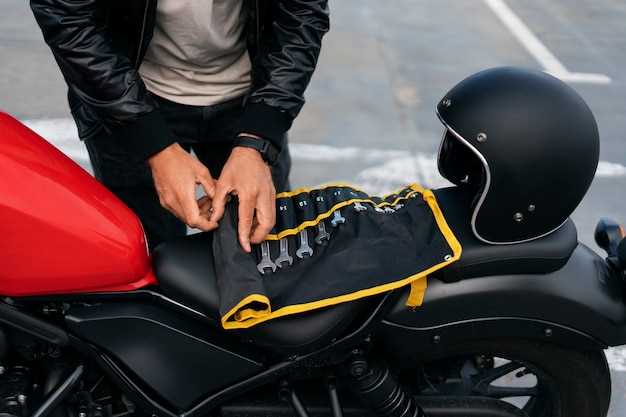
When it comes to racing, having the right gear is essential for both performance and safety. Among the various components of a racer’s outfit, gloves play a crucial role in ensuring optimal control and comfort during high-speed maneuvers. The right pair of racing gloves not only enhances grip but also protects your hands from heat and abrasion, contributing to an overall improved driving experience.
Modern racing gloves are designed with advanced materials and technology to deliver superior flexibility and dexterity. Many models feature silicone or textured palms to increase friction against the steering wheel, allowing for precise steering input even in intense situations. As every racer knows, the connection between the driver and the vehicle is paramount, and high-quality gloves serve as a vital link in that chain.
In this article, we will explore the top racing gloves available on the market, focusing on their unique qualities that enhance grip and comfort. From the choice of materials to the fit and design, we will delve into the factors that make these gloves stand out in the ever-competitive world of motorsport gear. Whether you’re a professional driver or a weekend enthusiast, the right gloves can elevate your performance and ensure you stay in control on the track.
Choosing the Right Material for Optimal Grip

Selecting the right material for racing gloves is crucial for drivers seeking the best combination of grip and comfort. The material directly impacts how well a driver can control their gear and maintain precision during high-speed maneuvers. Common materials used in racing gloves include leather, synthetic fabrics, and carbon fiber composites.
Leather is a traditional choice for many drivers due to its durability and natural feel. It provides excellent grip, especially when treated with special finishes that enhance adhesion. However, leather may absorb moisture over time, potentially affecting grip during long races.
Synthetic materials, such as polyester and nylon blends, offer lightweight options with moisture-wicking properties. These gloves often come with silicone grips or textured surfaces that improve control. The breathability of these fabrics helps drivers maintain comfort without sacrificing grip.
For advanced performance, carbon fiber composites are sometimes integrated into glove designs. This material delivers rigidity and structure without adding excessive weight, providing a stable platform for grip. Although typically pricier, these advanced materials can offer enhanced feedback from the steering wheel.
When selecting gloves, drivers should consider the specific conditions of their racing environment. Factors such as heat, humidity, and the nature of the track can influence material performance. Ultimately, the right material will enhance grip, ensuring better control and a safer racing experience.
Key Features to Look for in Racing Gloves
When selecting the best racing gloves, several key features should be prioritized to ensure both grip and comfort for the driver.
Material: Choose gloves made from high-quality materials such as Nomex or suede, as these provide excellent heat resistance and durability. The choice of material also influences the tactile feedback, which is essential for effective gear control.
Grip: Look for gloves with specialized grip patterns or silicone printing on the palms and fingers. This feature enhances contact with the steering wheel and improves handling precision during high-speed maneuvers.
Fit: A snug yet comfortable fit is crucial for optimal performance. Racing gloves should allow for freedom of movement while preventing excess material that could impair handling. Consider gloves with adjustable wrist straps for a secure fit.
Padded Knuckles: Gloves with padded knuckles provide additional protection without sacrificing flexibility. This feature is important for drivers who need to maintain comfort during long races while ensuring their hands are safeguarded against impacts.
Breathability: Look for gloves with breathable fabrics or mesh panels to enhance airflow. Improved ventilation minimizes sweat buildup, keeping hands dry and enhancing grip throughout the race.
Compliance with Regulations: Ensure that the gloves meet the safety standards set by racing organizations. Compliance with regulations not only offers protection but also ensures that drivers are wearing gear that is approved for competitive racing.
Considering these key features will help drivers make informed choices when selecting racing gloves that provide the best grip and comfort on the track.
Maintenance Tips to Extend the Life of Your Racing Gloves

Maintaining your racing gloves is essential for ensuring both grip and comfort during races. Proper care can significantly extend the lifespan of your gear, allowing you to focus more on performance rather than replacement.
1. Clean Regularly: After each race, gently clean your gloves with mild soap and water. Avoid harsh detergents that can damage the material. Use a soft cloth to wipe away dirt and sweat. Rinse thoroughly to prevent residue buildup.
2. Dry Properly: After washing, it’s crucial to dry your racing gloves correctly. Avoid direct sunlight or heat sources, as they can warp the material. Instead, lay them flat in a cool area, allowing them to air dry naturally to maintain their shape and integrity.
3. Avoid Excessive Wear: Be mindful of how you handle your gloves. Consistent friction against rough surfaces can lead to premature wear. Try to minimize contact with abrasive materials during handling and storage.
4. Store Wisely: Store your gloves in a cool, dry place away from direct sunlight. Consider using a dedicated storage bag to keep them clean and protected from dust. Avoid folding them excessively, as this can create creases that may damage the material over time.
5. Inspect Regularly: Periodically check your gloves for signs of wear, such as fraying seams or thinning fabric. Addressing small issues promptly can prevent larger problems and ensure that your gear remains safe and effective.
6. Use Liners: Consider using glove liners for added comfort and to absorb moisture. This can reduce sweating and help maintain the glove’s internal structure, prolonging its lifespan. Liners are also easier to wash and can keep your gloves fresher for longer.
By following these maintenance tips, drivers can enjoy better performance from their racing gloves, ensuring they feel comfortable and secure throughout their racing endeavors.











